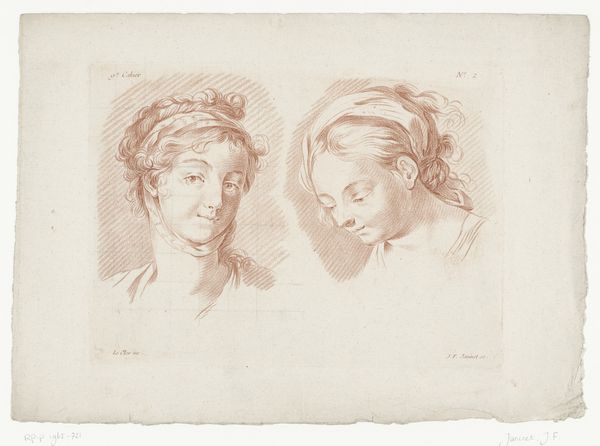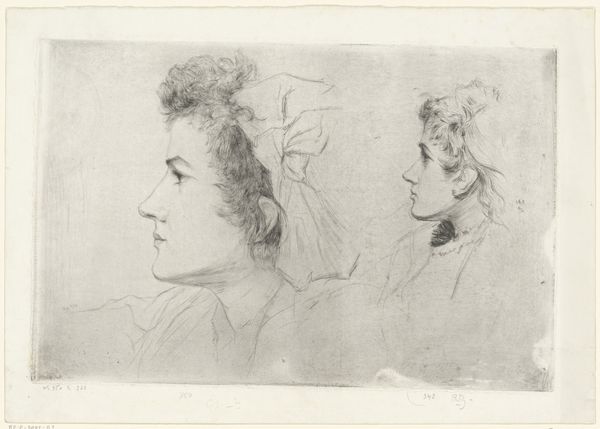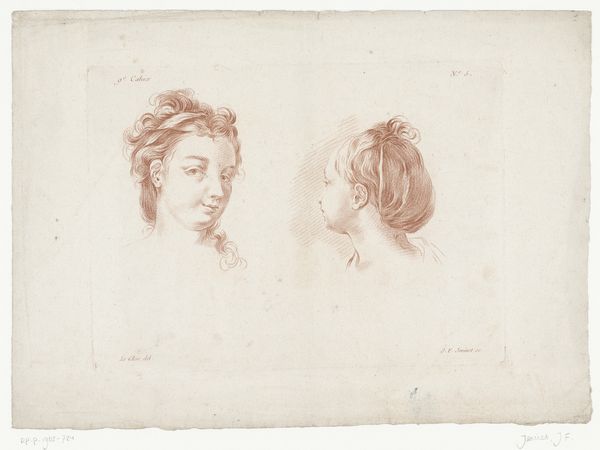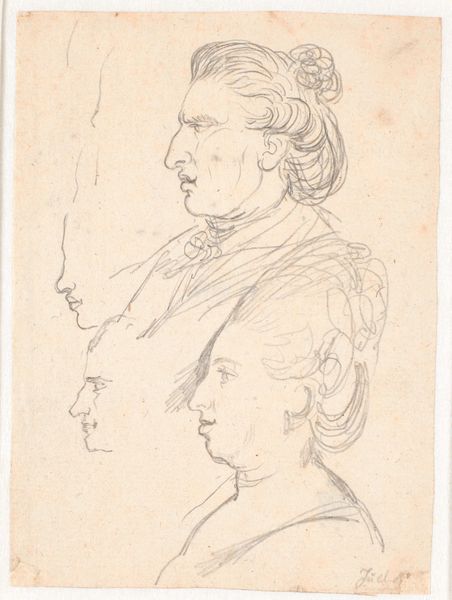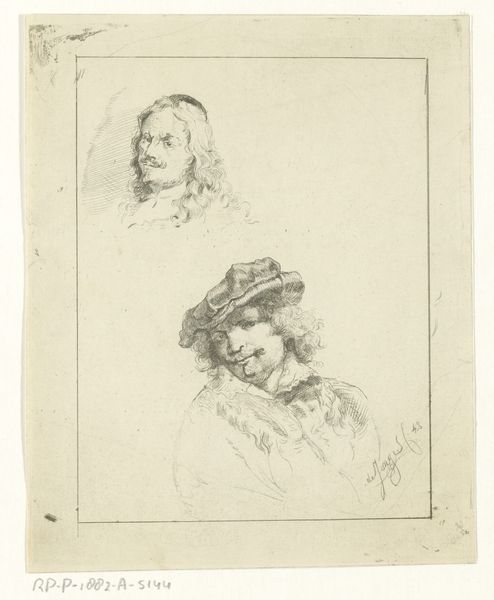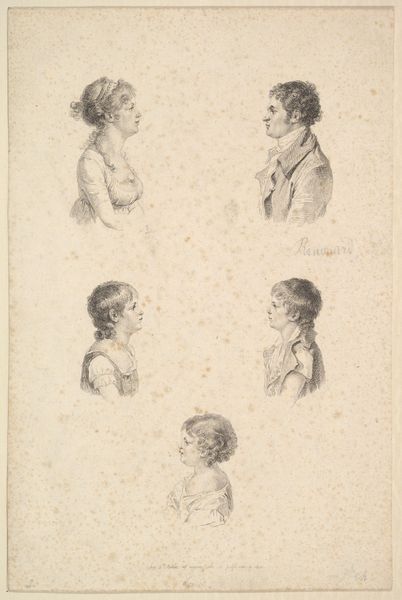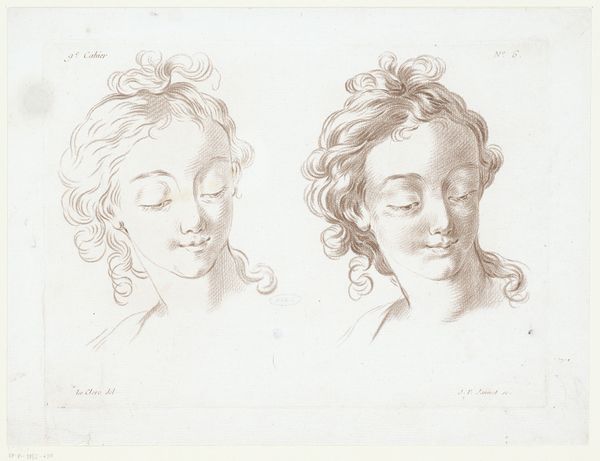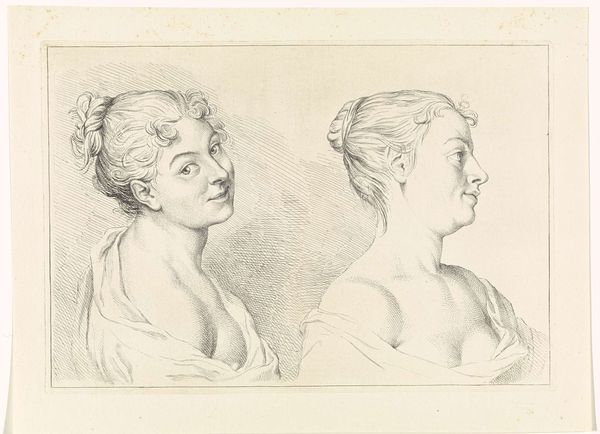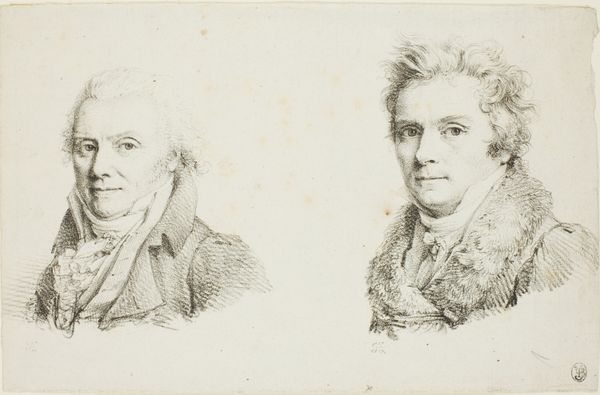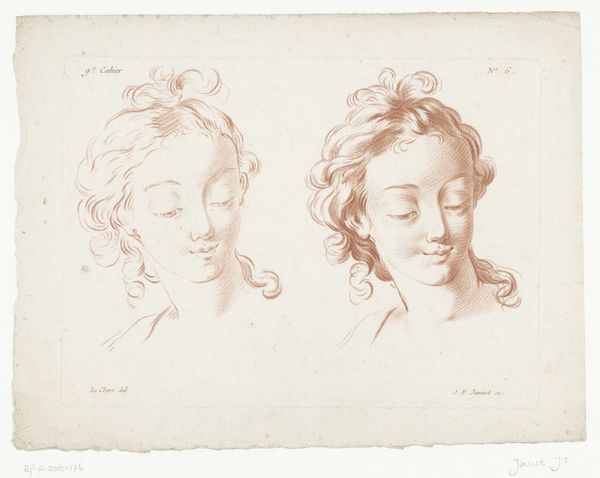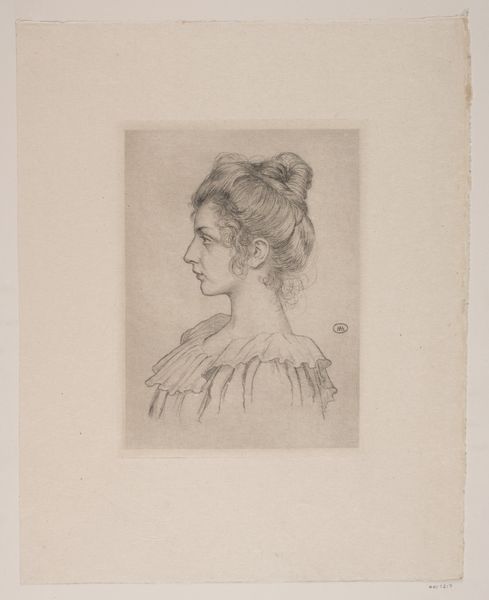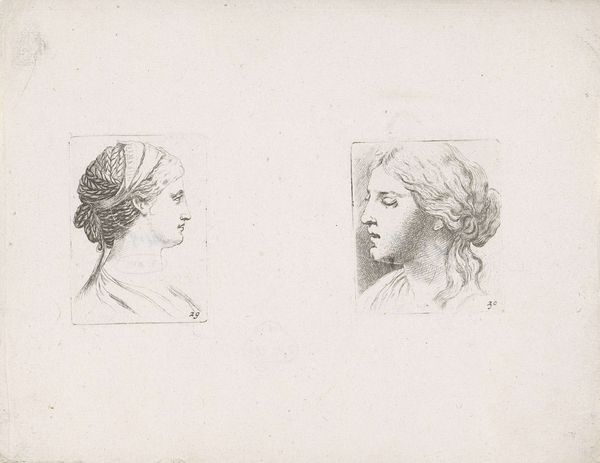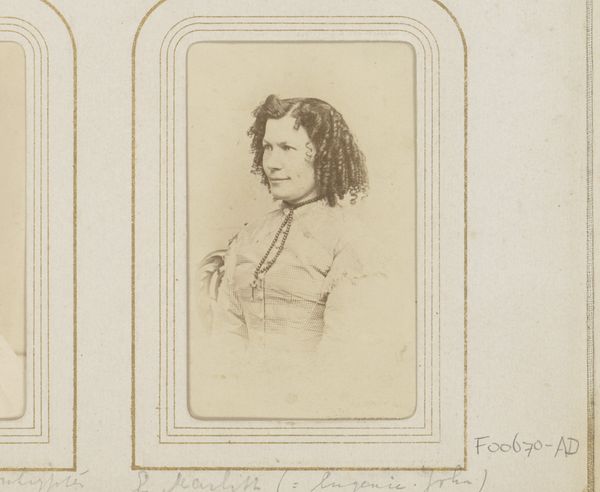
Portretten van mogelijk J.A. Daiwaille en zijn vrouw 1809 - 1850
0:00
0:00
drawing, pencil
#
portrait
#
pencil drawn
#
drawing
#
pencil sketch
#
romanticism
#
pencil
#
sketchbook drawing
#
pencil work
#
genre-painting
Dimensions: height mm, width mm
Copyright: Rijks Museum: Open Domain
Jean Augustin Daiwaille likely made this double portrait in the early 19th century. It presents us with a man and a woman, perhaps Daiwaille himself and his wife, rendered in a detailed, academic style. What’s interesting here is how portraiture served a rising middle class in the Netherlands. As traditional aristocratic power waned, people outside the elite sought ways to affirm their status. Commissioning portraits like these became a way to participate in a visual culture of social mobility. Institutions such as art academies played a huge role in shaping the production of these images. They standardized artistic techniques but also dictated what subjects were considered worthy of representation. This portrait embodies those standards while giving us a glimpse into the personal lives of people who lived through transformative social change. To understand this work fully, we could look into the records of the Dutch art world, like exhibition catalogues and artists' biographies, placing it within a broader history of representation and social aspiration.
Comments
No comments
Be the first to comment and join the conversation on the ultimate creative platform.
